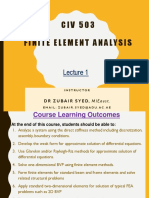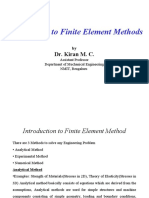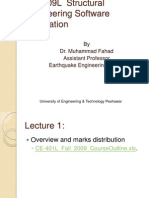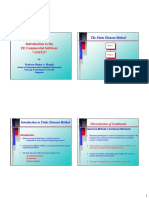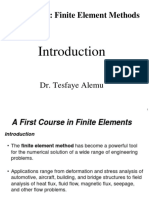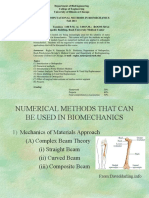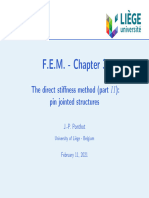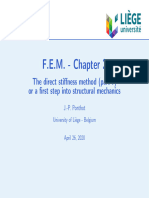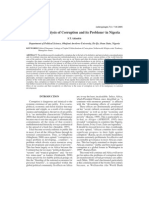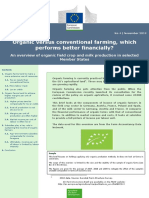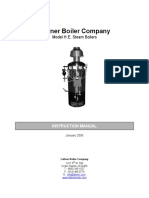0% found this document useful (0 votes)
153 views99 pagesIntroduction to Finite Element Method
The document introduces the finite element method (FEM) for computational mechanics. FEM is a numerical technique used to approximate solutions to partial differential equations. It involves discretizing a structure into finite elements connected at nodes, and using interpolation to relate unknown field values at nodes. This reduces an infinite degree of freedom problem into a finite system of equations that can be solved for the unknown nodal values, providing an approximate solution. FEM allows analyzing complex engineering problems that cannot be solved analytically.
Uploaded by
ទូច វិចិត្តCopyright
© © All Rights Reserved
We take content rights seriously. If you suspect this is your content, claim it here.
Available Formats
Download as PDF, TXT or read online on Scribd
0% found this document useful (0 votes)
153 views99 pagesIntroduction to Finite Element Method
The document introduces the finite element method (FEM) for computational mechanics. FEM is a numerical technique used to approximate solutions to partial differential equations. It involves discretizing a structure into finite elements connected at nodes, and using interpolation to relate unknown field values at nodes. This reduces an infinite degree of freedom problem into a finite system of equations that can be solved for the unknown nodal values, providing an approximate solution. FEM allows analyzing complex engineering problems that cannot be solved analytically.
Uploaded by
ទូច វិចិត្តCopyright
© © All Rights Reserved
We take content rights seriously. If you suspect this is your content, claim it here.
Available Formats
Download as PDF, TXT or read online on Scribd
/ 99







